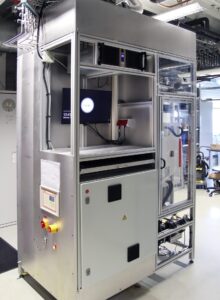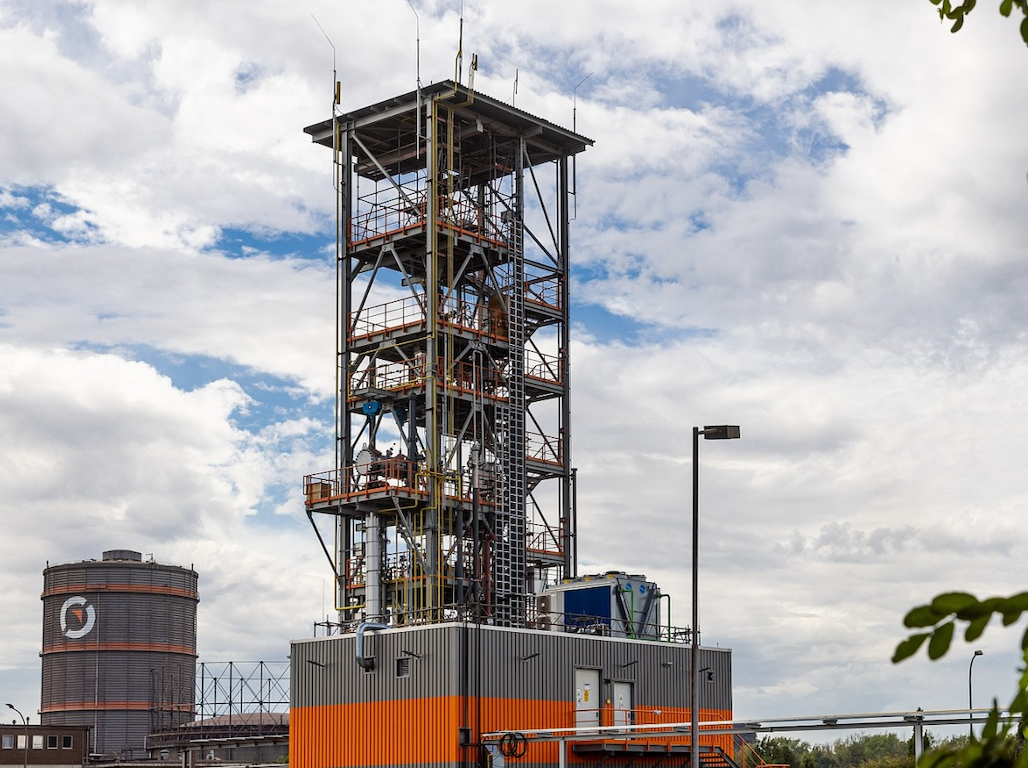January 2024 | The conversion of a steel plant to a climate-neutral production process using hydrogen is expected to reduce CO2 emissions by up to 97 per cent. The Fraunhofer Institute IKTS, TS ELINO GmbH and Salzgitter AG are working together on a pioneering solution for steel production.
Steel production is known to be one of the main sources of carbon dioxide emissions. To meet this challenge, researchers from the Fraunhofer Institute for Ceramic Technologies and Systems IKTS, industrial furnace manufacturer TS ELINO GmbH and Salzgitter AG are working together to convert an existing steelworks to a climate-neutral production method. The concept involves the direct reduction of iron ore using hydrogen generated by green electrolysis processes. The current use of climate-damaging coke as a reducing agent is no longer necessary. This conversion could lead to a reduction in carbon dioxide emissions of up to 97 per cent, a significant contribution to climate protection.
Steel is a versatile material used in a wide range of products, from buildings to vehicles and machinery. But conventional steel production has a huge environmental impact. According to the Competence Centre for Climate Protection in Energy-intensive Industries (KEI), steel production in Germany alone emits around 55 million tonnes of CO2 each year, accounting for around 28 percent of total CO2 emissions from German industry. The main reason for this is the use of coke to produce pig iron in blast furnaces.
Benefits of high-temperature electrolysis
The Fraunhofer Institute IKTS, in collaboration with other Fraunhofer institutes and Salzgitter AG, is focussing on hydrogen-based direct reduction. In this process, iron ore reacts with hydrogen at high temperature in a reactor. The hydrogen as a reducing agent removes the iron oxide from the iron ore, leaving iron behind.
“We use electricity from renewable energy sources, so the production of hydrogen is completely CO2-free. In this way, crude steel production using green hydrogen saves up to 97 per cent of climate-damaging carbon dioxide,” explains Dr Matthias Jahn, Head of the Energy and Process Engineering Department at Fraunhofer IKTS.
Green hydrogen is produced via high-temperature electrolysis using solid oxide electrolysis cells (SOEC). This method is particularly advantageous in steel production, as the waste heat from the high-temperature processes can be utilised. This increases the electrical efficiency. Fraunhofer IKTS uses in-house developments as electrolysis cells and stacks, which have already been successfully tested in the “MACOR” and “BeWiSe” projects.

Laboratory-scale direct reduction plant for reaction kinetic investigations and modelling of the shaft furnace © Fraunhofer IKTS
From research to application
In the current “BeWiSe” project, the researchers are working on further optimising the entire process chain in terms of resource and energy efficiency. A 30-metre high direct reduction demonstration plant on the Salzgitter AG site is being used for this purpose. One focus is on investigating how biogenic materials can be used as a substitute for coal and natural gas in order to adjust the required carbon content in the steel. The efficient use of water is also being investigated, as large quantities of water are required for electrolysis. For this reason, the water produced with hydrogen during iron ore reduction will be treated for reuse wherever possible.
“We are not content with selective solutions and laboratory plants, but offer Salzgitter AG comprehensive technological support for all process steps,” says Gregor Herz, Group Manager Modelling and Simulation at Fraunhofer IKTS.
Dr Alexander Redenius, Head of Resource Efficiency and Technology Development at Salzgitter Mannesmann Forschung, emphasises: “The direct reduction demonstration plant enables us to optimise the reduction process and its interaction with the other process steps. We are thus creating the basis for low-CO2 and sustainable steel production.” The company aims to convert a third of its steel production to the climate-friendly process using hydrogen as early as 2026.
More information: fraunhofer.de/en/converting-a-steel-mill-to-climate-neutral-steel-production.html and salzgitter-ag.com/en/co2-emissions-in-steel-production-from-100-to-5-percent
